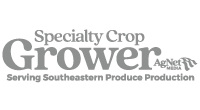The U.S. Department of Agriculture Foreign Agricultural Service (USDA/FAS) forecasts that 2024–25 production of South African tangerines/mandarins (also known as soft citrus) will increase by 3% from the prior year to 790,000 metric tons (MT). Growers have been putting up hail nets, which are expected to support both yield and fruit quality.
PLANTED AREA AND CULTIVARS
USDA FAS expects that the tangerines/mandarin acreage will increase by 1% to 27,300 hectares in 2024–25. The slight increase reflects a move from other citrus types such as grapefruit to soft citrus due to relatively higher demand in the export market.

Driven by higher global demand for seedless soft citrus and relatively high profit margins compared to other citrus types, farmers planted a lot of new area in the latter half of the 2010s. Since then, growers have expanded the number of hectares under netting to better control pests, enhance water management practices and protect fruit from wind, hail and sun damage.
The Western Cape province is the largest producer of soft citrus, increasing by 2% from 2022–23 to account for 38% of South Africa’s total soft citrus production. The Western Cape is followed by Limpopo (28%) and Eastern Cape (24%) provinces.
The predominant soft citrus cultivar planted is Nadorcott, accounting for almost 18% of total area. Nadorcott is followed by Arccit 9 (16%), Tango (14%), Nules (11%), Nova (10%), Leanri (7%) and Orri (7%).
PROCESSING AND TRADE
Tangerine/mandarin processing quantities in 2024–25 are expected to remain unchanged from 2023–24 at 71,000 MT.
USDA FAS forecasts that increased production of export-quality fruit due to investments in quality improvements will increase tangerine/mandarin exports by 3% in 2024–25 to 674,000 MT. Growth will also be driven by a growing global demand, especially in leading markets such as the European Union (EU), United Kingdom (UK), Middle East, Asia and North America.
The EU and the UK are the largest foreign markets for South African soft citrus, accounting for 45% of total exports. They are followed by the United Arab Emirates (9%), Russia (8%), the United States (8%), China (5%) and Canada (5%).
South Africa’s imports are minimal and forecast to remain below 4,000 MT in 2024–25.
See the full USDA FAS report on South African citrus production here.
Source: USDA FAS
Share this Post
Sponsored Content










